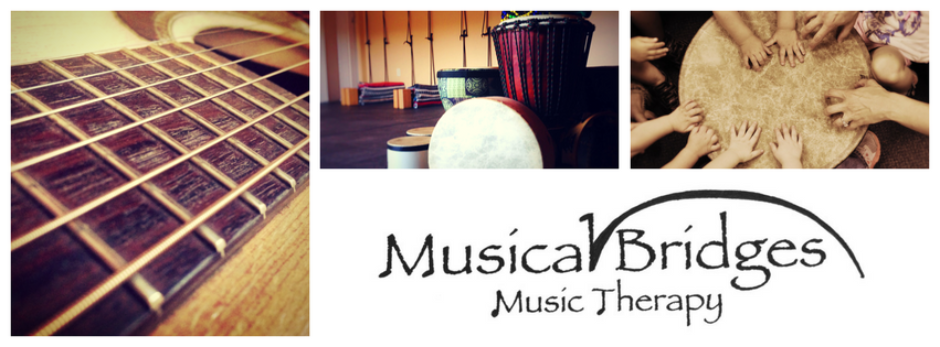 Since it is Autism Awareness month, it seemed appropriate to follow up Part II of Your Brain on Music with an emphasis on autism. Though research is scarce on how music specifically affects the brain of individuals with autism, there are some facts that can be drawn to light which support that music can help with learning, communication and emotional processing.
Since it is Autism Awareness month, it seemed appropriate to follow up Part II of Your Brain on Music with an emphasis on autism. Though research is scarce on how music specifically affects the brain of individuals with autism, there are some facts that can be drawn to light which support that music can help with learning, communication and emotional processing.
1. Music can aid learning and memory. Researchers have found the brains of children with autism to have disturbances in development of the cortex, the area of the brain which is critical for learning and memory (UCLA, 2013; Stoner, Chow, Boyle, Sunkin, Mouton, Roy, Wynshaw-Boris, Colamarino, Lein, & Courchesne, 2014). In addition, these patches are in various places in the cortex and may explain why the symptoms of autism are so different from child to child. So you may be asking yourself… what does this have to do with music? As mentioned in the previous post on music and the brain, music is a whole brain process which is processed all over the cerebral cortex. Music also aids tremendously in memory retention. Since music is processed across the cerebral cortex, neurological bypasses are possible which can aid the child with autism in learning by stimulating multiple areas of the brain at once which may not be stimulated in a non-musical setting. Working alongside of this is music’s connection with memory which can help the child with autism retain information easier if it is taught through music. Research supports the use of music to aid in retention of information and has been shown to be more effective than non-musical techniques (Claussen & Thaut, 1997; Wolfe & Hom, 1993). Why do we sing the ABCs? Because the brain only has to memorize 4 parts (the 4 phrases of the song), opposed to 26 individual bits of information. I have used music with almost all of my clients to aid in learning personal information such as phone numbers, how to spell their names, counting, etc., all by pairing the information with a melody.
2. Musical training can aid in restructuring of the brain to aid with communication. According to Wan and Schlaug, language deficits may be due to abnormalities or altered connections in the front and temporal regions of the brain. It has been shown in research that long term instrumental practice results in a larger corpos callossum (Schlaug, Forgeard, Zhu, Norton, & Winner, 2009), frontal and temporal lobes (Hyde, Lerch, & Norton, 2009). Due to music’s ability to create these changes in the brain, this may explain why children with autism gain communication skills with musical intervention. These findings may also warrant musical training for those with autism to aid in language development. Music is often an enjoyable and motivating experience for those with autism, therefore resulting in a noninvasive form of treatment which can aid in therapy goals while being fun at the same time.
3. Music accesses emotional centers of the brain. Children with autism often have difficulty processing emotions. Music is a multi-sensory experience which often evokes emotions in the individual with autism and can help in therapy. Research supports that musical stimuli activates areas of the brain including the insular and cingulate cortex, prefrontal cortex (there’s mention of the cortex again which was mentioned in fact 1!), the hippocampus and the amygdala, all of which are areas involved with emotional processing (Boso, Politi, Barale, & Enzo, 2006). By using a stronger stimuli to activate the emotions, progress can be made towards processing, understanding and expression of emotions which can often be difficult for the individual with autism.
These are just 3 facts to consider. Much more research is needed in this area and hopefully will be conducted in the future. The main point to take away is that music is a strong, multi-sensory stimulant which can and has been used effectively in treatment of many on the autism spectrum.
Check out Wan & Schlaug’s article to read further on language, music, autism and the brain.
——————-
References
Boso M, Politi P, Barale F, Enzo E. (2006). Neurophysiology and neurobiology of the musical experience. Functional Neurology. 21(4):187–191.
Claussen, D., & Thaut, M. (1997). Music as a mnemonic device for children with learning disabilities. Canadian Journal of Music Therapy. 5, 55-66.
Hyde, K., Lerch, J., Norton A. (2009). Musical training shapes structural brain development. Journal of Neuroscience, 29(10), 3019-3025.
Schlaug, G., Forgeard, M., Zhu, L., Norton, A., & Winner, E. (2009). Training-induced neuroplasticity in young children. Neurosciences and Music III: Disorders and plasticity. 205-208.
Stoner, R., Chow, M., Boyle, M., Sunkin, S., Mouton, P., Roy, S., Wynshaw-Boris, A., Colamarino, S., Lein, E., & Courchesne, E. (2014). Patches of disorganization in the neocortex of children with autism. New England Journal of Medicine, 370, 1209-1219. DOI: 10.1056/NEJMoa1307491University of California, Los Angeles (UCLA), Health Sciences. (2013). First map of autism-risk genes by function. ScienceDaily. Retrieved April 11, 2014 from www.sciencedaily.com/releases/2013/11/131121125647.htm
Wan, C, & Schlaug, G. (2010). Neural pathways for language in autism: the potential for music-based treatments. Future Neurology, 5(6), 797-805.
Wolfe, D., & Hom, C. (1993). Use of melodies as structural prompts for learning and retention of sequential verbal information by preschool students. Journal of Music Therapy, 30(2), 100-118.
